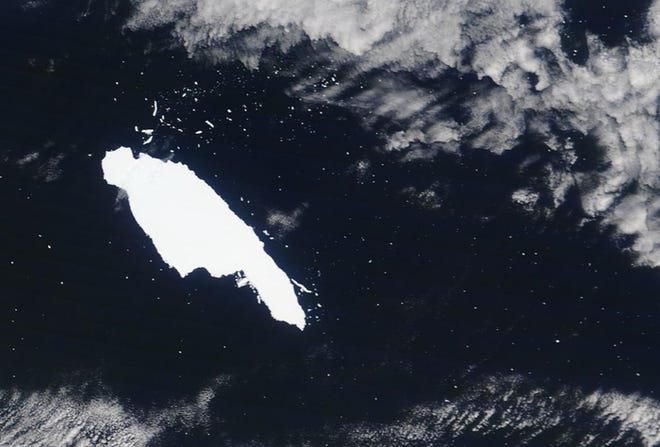
What was once the biggest iceberg in the world released more than 167 billion tons of freshwater in three months and nearly 1 trillion tons in its lifespan, which could have profound effects on wildlife, scientists say.
The A68A iceberg was part of the Larsen-C Ice Shelf on the Antarctica peninsula before it broke off in July 2017. At the time, it was the biggest iceberg on Earth at 2,208 square miles, larger than the state of Delaware.
When the iceberg broke off, it began to drift across the Southern Ocean. In December 2020, the iceberg began to approach South Georgia island, about 1,300 miles off the Argentina coast. The island is home to wildlife including penguins and seals.
Start your day smarter:Get USA TODAY's Daily Briefing in your inbox

Scientists said the iceberg broke apart just before it could have hit the seabed. A collision could have seriously damaged the island's ecosystem, including killing wildlife.
A team of international scientists then examined the size and thickness of the iceberg since it first broke off using three satellites. The team found the iceberg had released more than 167 billion tons of water around the island in three months. That would be enough water to fill 61 million Olympic-size swimming pools.
The findings are set to be published in the March 1 edition of Remote Sensing of Environment.
"This is a huge amount of melt water," Anne Braakmann-Folgmann, a researcher at the University of Leeds in England and Centre for Polar Observation and Modelling, said in a statement.
The melting was the result of the iceberg's movement from the cold waters along the Drake Passage to the warmer Scotia Sea near the island. When the iceberg approached the island, it dropped in thickness from 771 feet to 219 feet, most of which occurred from November 2020 to January 2021.
By April 2021, it had completely melted, totaling 992 billion tons of ice lost in its 2,485-mile journey since it broke off in 2017. At its peak, 22 feet of ice melted each month.
"Doomsday" glacier: Collapse of Florida-sized glacier may happen soon, raising sea levels and threatening coastal cities
Rain: The Arctic will soon see more rain than snow. Scientists say it may speed up global warming.
Luckily, the melting was enough to break the iceberg so it's "less of a risk in terms of blockage" of the island, but it still could have a significant effect. The cold freshwater drifts with the oceans currents, so the mixture with the salty warm waters will release nutrients into the waters.
Scientists believe that will change or produce new plankton in the area, which affects the local food chain. What that means for the environment in the long term is not known.
"The next thing we want to learn is whether it had a positive or negative impact on the ecosystem around South Georgia," Braakmann-Folgmann said. "Because A68A took a common route across the Drake Passage, we hope to learn more about icebergs taking a similar trajectory, and how they influence the polar oceans.”
Follow Jordan Mendoza on Twitter: @jordan_mendoza5.








